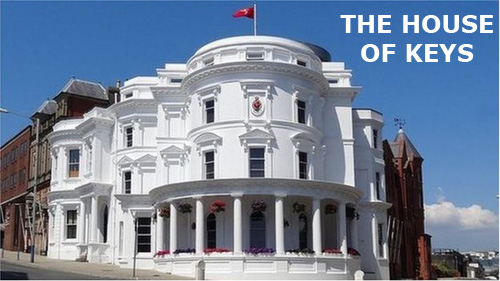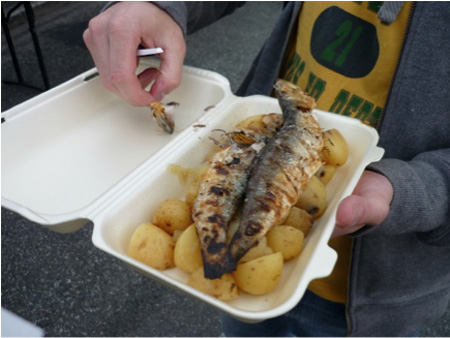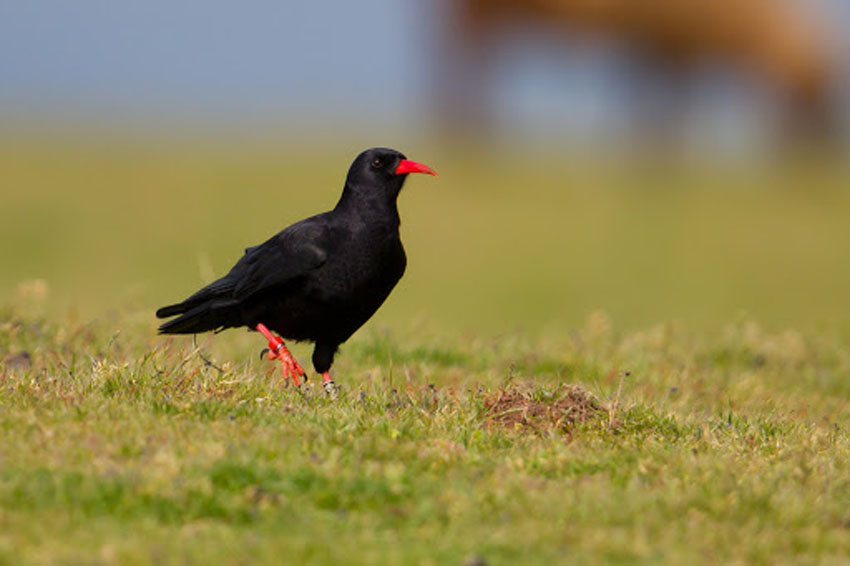




Back to the Isle of Man Page

- The Royal Connection
- Isle of Man Eats
- Owlbut's Birdwatch
- Isle of Man VIPs
 The Isle of Man obviously has a royal
connection as the British monarch is the head of State, although the island is self governing with its own parliament called the Tynwald. People have lived on
the island for thousands of years. It was cut off from the British Isles at the end of the last Ice Age, about 10,000 years ago. In the 5th century AD Gaelic
people from the island of Ireland began to settle there.
The Isle of Man obviously has a royal
connection as the British monarch is the head of State, although the island is self governing with its own parliament called the Tynwald. People have lived on
the island for thousands of years. It was cut off from the British Isles at the end of the last Ice Age, about 10,000 years ago. In the 5th century AD Gaelic
people from the island of Ireland began to settle there.
In 627AD King (see royal) Edwin of Northumbria conquered the Isle of Man. At the end of the 8th century the Vikings arrived. They made a big impression
on the island and also founded the Tynwald, which claims to be over 1,000 years old and the longest continually serving parliament in the world. Between 1099 and 1103,
King (royal) Magnus III of Norway reigned as King. In 1266 King (royal) Magnus VI of Norway
gave the islands to Scotland. In 1290 King (royal) Edward I of England conquered the island but in 1313 Robert the Bruce (spiderman) took control. He lost it in
1314, Scotland won it back in 1317 and held it until 1333. It then went back and forth until 1346 when England took control although the Tynwald still had some control.
In 1861 the Tynwald became the first national government to give women the right to vote in general elections, although this didn't apply to married
women. In 1866 the Isle of Man gained limited home rule with elections to the House of Keys which is the lower house of the Tynwald, a bit like the House of
Commons in England.
![]() Back to the top
Back to the top
 The traditional dish of the Isle of Man
is known as Spuds and Herrin which to you and me is potatoes and herring which strikes me as being a kind of fish and chips. This dish is chosen because it
supports the local farmers and fisherman who make a living from on and around the island. Fish and seafood are a major part of the everyday diet.
The traditional dish of the Isle of Man
is known as Spuds and Herrin which to you and me is potatoes and herring which strikes me as being a kind of fish and chips. This dish is chosen because it
supports the local farmers and fisherman who make a living from on and around the island. Fish and seafood are a major part of the everyday diet.
To make this dish is really easy and so I thought I would tell you how to do it. By the way, if you go to our "eats" section from Northumberland
you will find out about the Craster kipper. Kippers are actually herrings that have been smoked and the Isle of Man is also famous for its kippers.
However to make Spuds and Herrin this is what you need to do. Buy some salted herrings, one for each person. Soak them in fresh water overnight.
Scrub your potatoes and cut them into pieces, about the size you can see in the picture. Put them in a large saucepan and barely cover with water. When the
potatoes are half-cooked, probably about 10 to 15 minutes, lay the herring on top, and cook for another 10 minutes. Lift the herring out, drain the potatoes,
place them on a plate with a slice of raw onion and a knob of butter and place herring on top
![]() Back to the top
Back to the top
The red billed chough, pronounced chuff, is a member of the crow family but unlike any others of that family. Apart from being
red, its beak is of medium length, curved and of medium thickness. It has black feathers and its legs are brown, orange and red. It can only be found on the west
of the British Isles and there are about 150 pairs on the Isle of Man. They can put on wonderful displays of flying, diving and swooping. They eat insects and larvae.
The red billed chough is 40cms in length, has a wingspan of between 73 and 90cms and can weigh between 260 and 350 grams. They are usually seen around
rocky coasts with short grassland but also on farmland. They can be seen all year round.

Seven random people who were born on the Isle of Man in the last 100 years:-
Barry Gibb (Singer, part of the BeeGees, his two brothers Robin and Maurice were also born there), Mark Cavendish (cyclist), Samantha Barks (Actor),
Simon Lynch (Singer), Kevin Woodford (Chef), Amy Jackson (Model and Actor) and David Knight (Motor Cycle Racer).
![]() Back to the top
Back to the top

